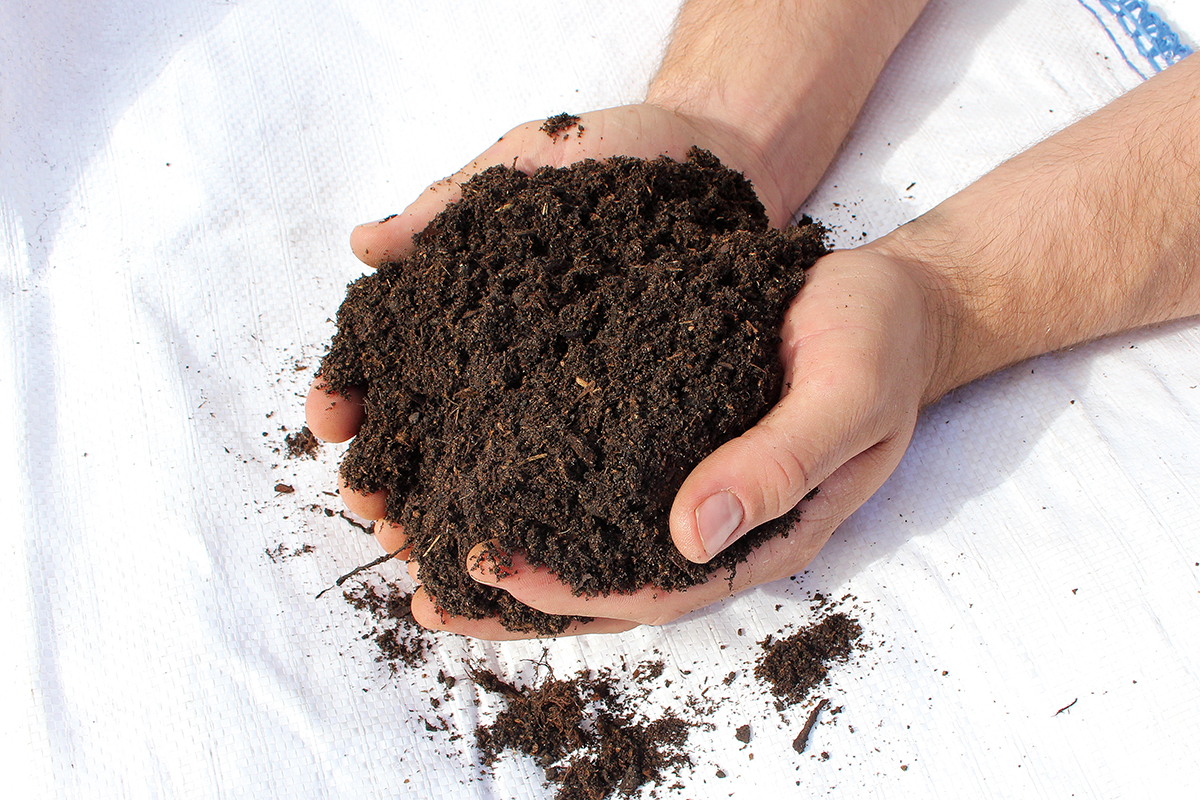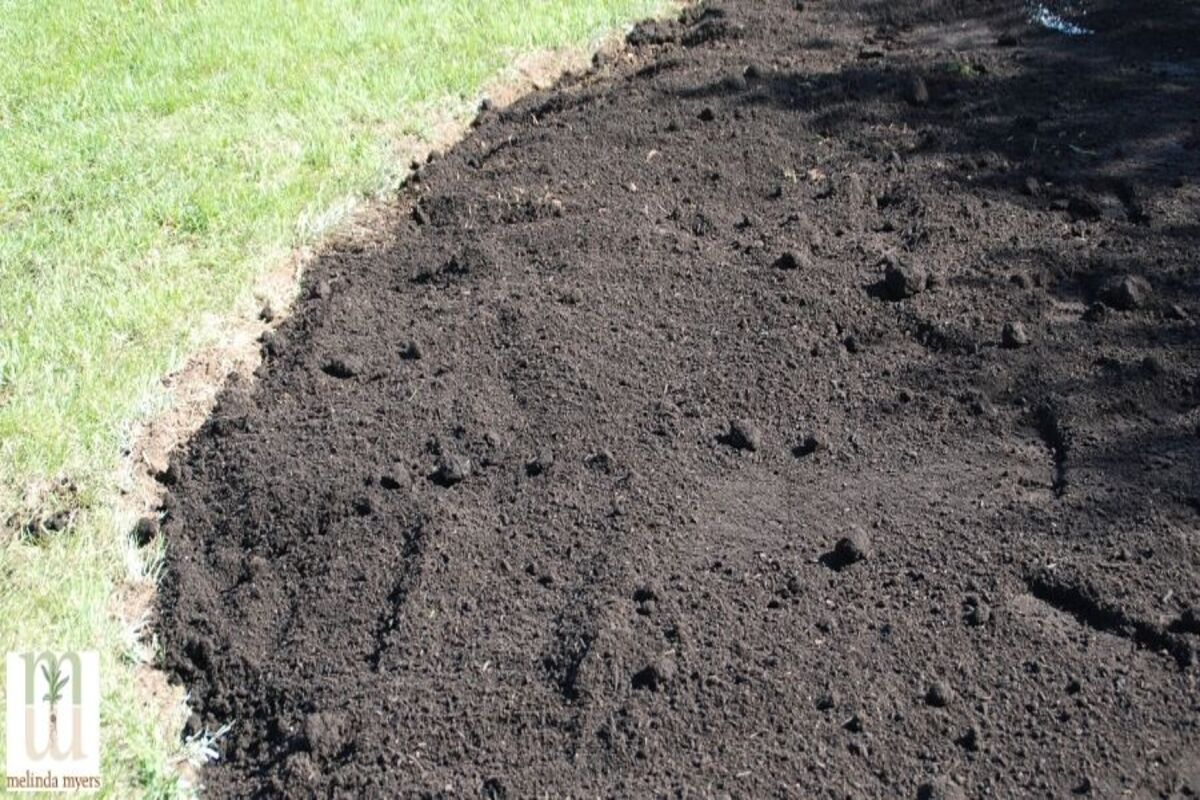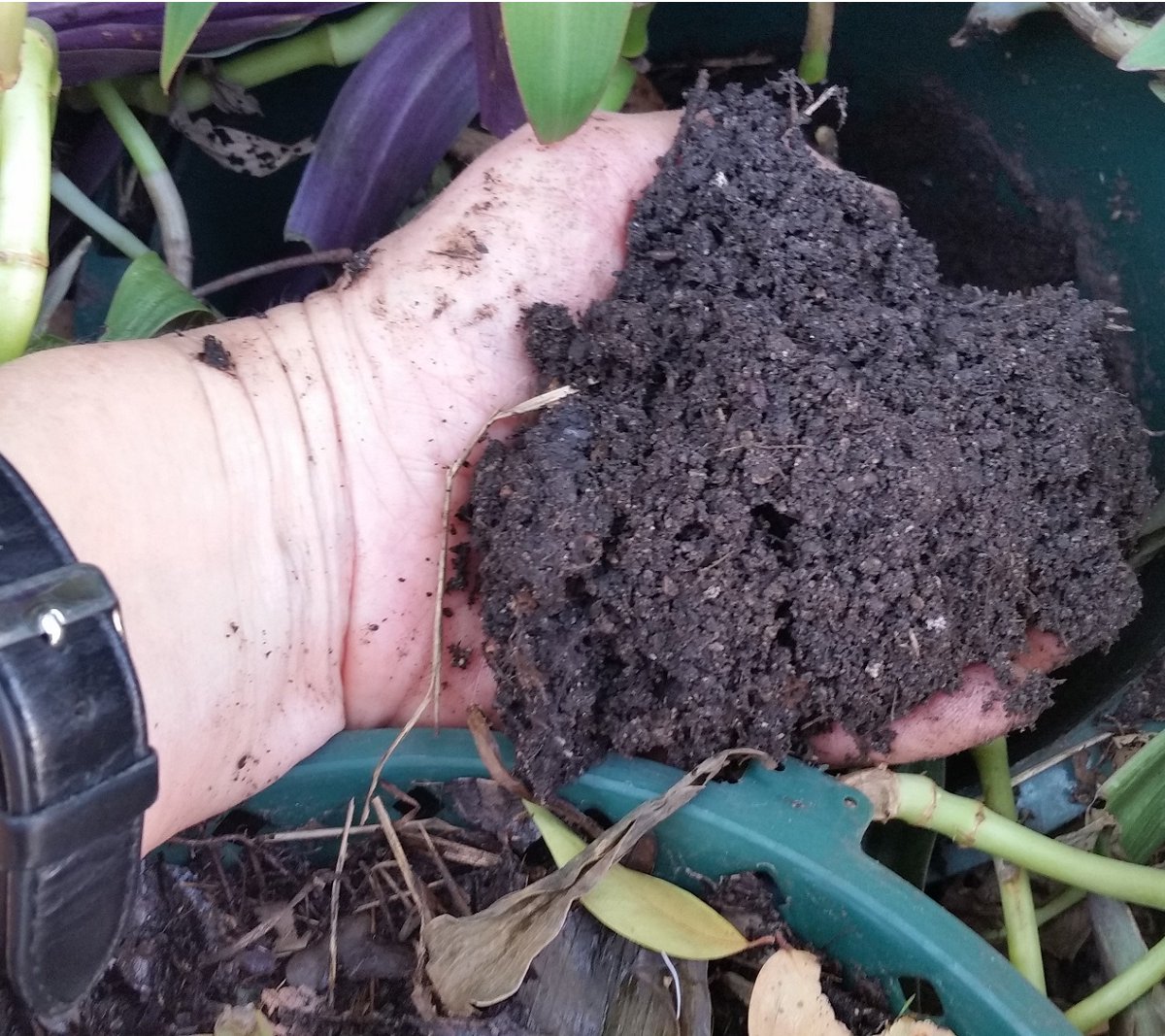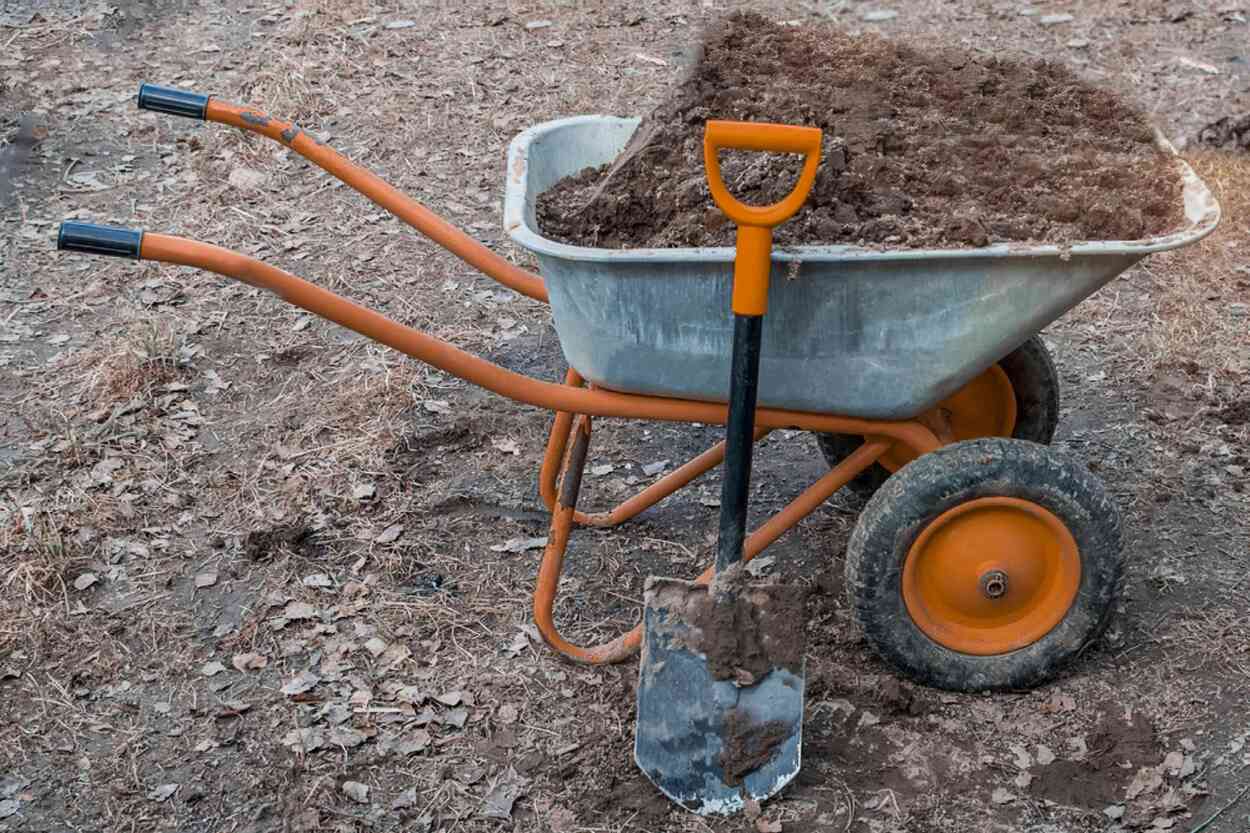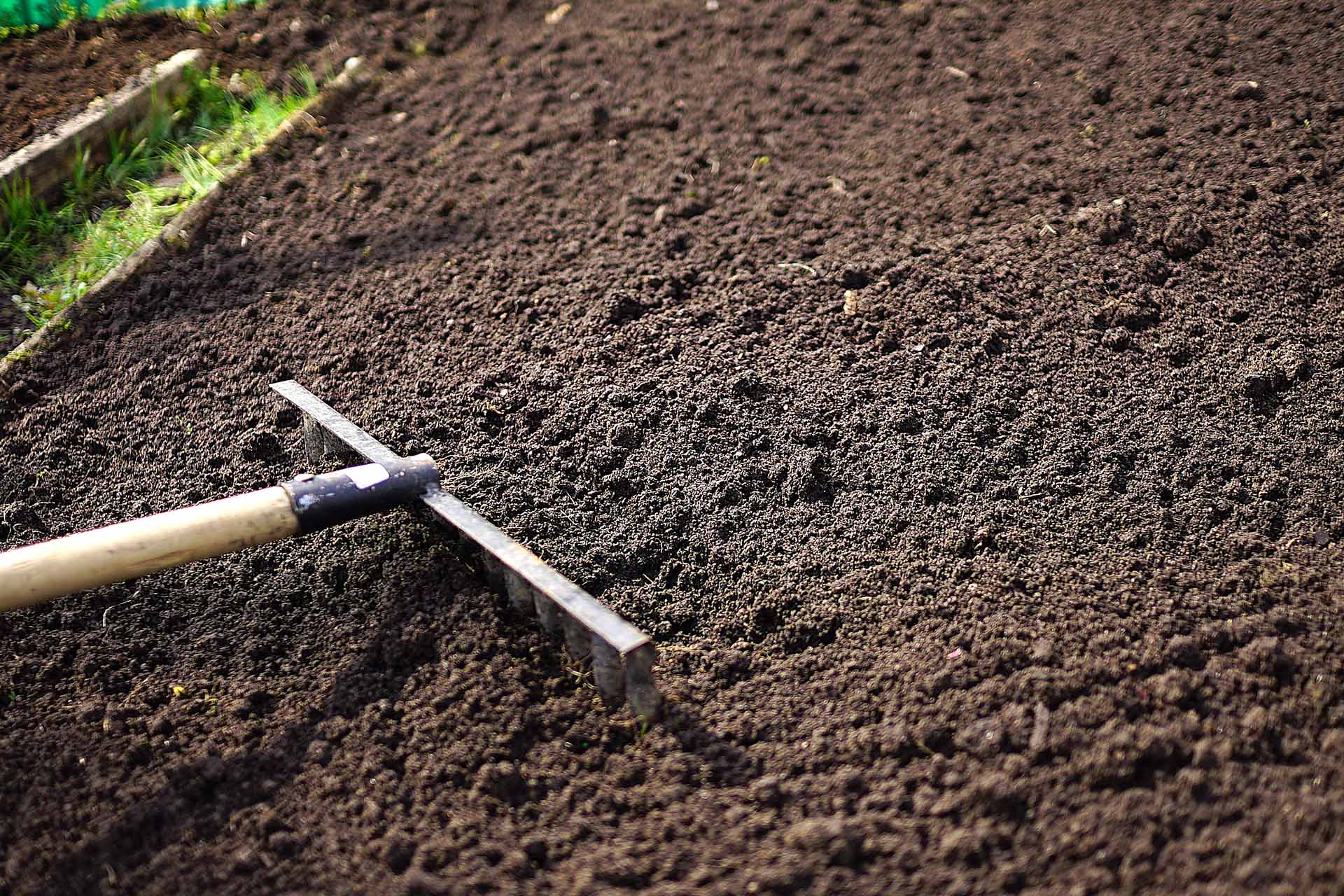Home>Gardening Basics>Understanding Soil>What Is Topsoil Vs Compost
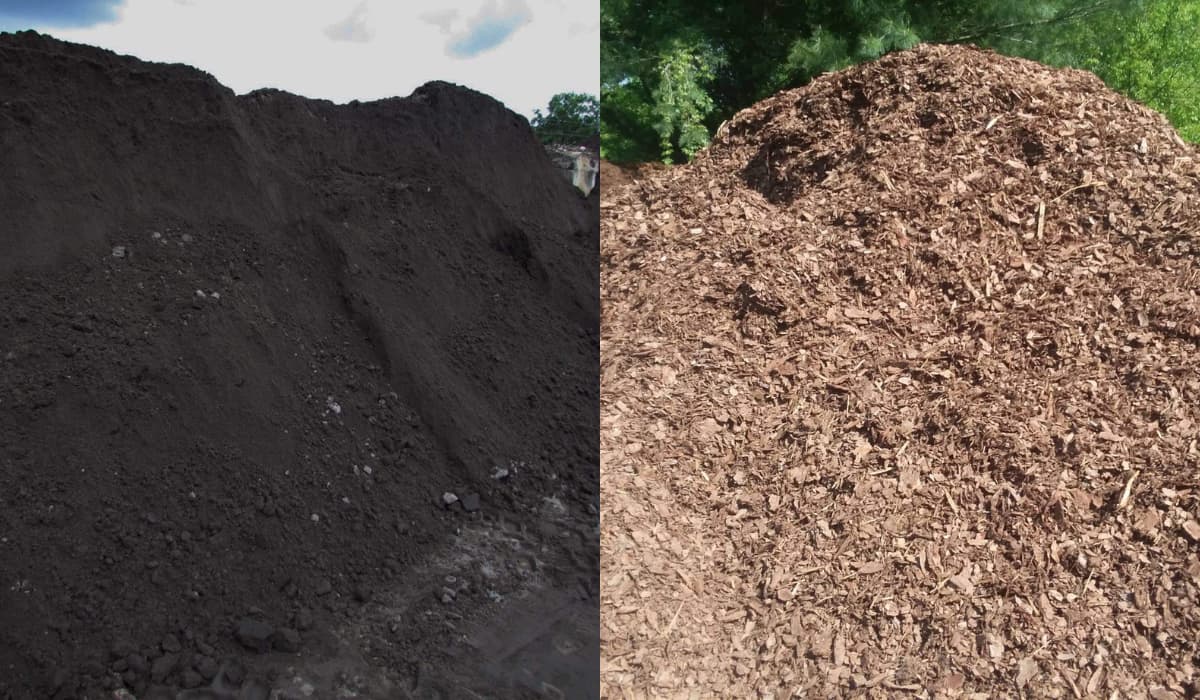

Understanding Soil
What Is Topsoil Vs Compost
Modified: January 22, 2024
Understanding soil: Learn the key differences between topsoil and compost to improve your gardening. Enhance your knowledge of soil composition and choose the right option for your plants.
(Many of the links in this article redirect to a specific reviewed product. Your purchase of these products through affiliate links helps to generate commission for Chicagolandgardening.com, at no extra cost. Learn more)
Table of Contents
Introduction
Welcome to the world of soil! Soil is one of the most essential elements for the growth and sustainability of plants. Understanding the different types of soil and their properties is crucial for successful gardening, landscaping, and agriculture. In particular, two common terms that often come up in soil discussions are “topsoil” and “compost”. While they may seem similar, they have distinct characteristics and purposes. In this article, we will explore the differences between topsoil and compost, their compositions, uses, and the benefits they provide to plants.
So, what exactly is topsoil? Topsoil refers to the uppermost layer of soil on the Earth’s surface, typically ranging from 2 to 8 inches thick. It is a combination of organic matter, minerals, water, and air, and it plays a vital role in supporting plant growth. Topsoil is rich in nutrients and microorganisms that promote root development and provide a favorable environment for plants to thrive. Whether you’re planting a garden or laying sod, having good quality topsoil is crucial for healthy plant growth.
In contrast, compost is a specially prepared organic material that has undergone the process of decomposition. It is created by combining organic matter like leaves, grass clippings, food scraps, and other plant-based materials. Composting involves allowing these materials to break down over time, with the help of moisture, oxygen, and microorganisms. The result is a nutrient-rich substance that improves soil structure, enhances moisture retention, and provides essential elements for plant nutrition. Compost is often referred to as “black gold” due to its numerous benefits for soil health and plant growth.
Now that we have defined topsoil and compost, let’s dive deeper into the differences between them. Understanding these distinctions will help us utilize each material effectively for our gardening and landscaping needs.
Definition of Topsoil
Topsoil is the uppermost layer of soil found on the Earth’s surface. It is commonly referred to as the “skin” of the soil because it is the layer that comes into direct contact with plants’ roots. Topsoil is typically located between 2 to 8 inches below the surface and is crucial for plant growth.
In terms of composition, topsoil is a mixture of organic matter, minerals, water, and air. It contains a higher concentration of nutrients compared to the underlying subsoil layers, making it ideal for plant roots to extract essential elements for growth. The organic matter in topsoil consists of decaying plant and animal residues, microorganisms, and other organic materials, all of which contribute to the fertility and structure of the soil.
The texture of topsoil can vary depending on the geographical location and parent materials. It can be sandy, loamy, or clayey, or a combination of these textures. Sandy topsoil tends to drain water quickly but may require more frequent irrigation, while clayey topsoil retains water for longer periods but may become compacted. Loamy topsoil, which is a balanced mixture of sand, silt, and clay, is considered the ideal texture for most plants as it provides good drainage and retains moisture.
Topsoil plays a vital role in supporting plant growth by providing a suitable environment for roots to establish and extract nutrients. It acts as a reservoir for water and essential elements, preventing them from leaching away. The presence of organic matter in topsoil improves soil structure, allowing for better root penetration, aeration, and drainage. Additionally, topsoil contains a diverse range of beneficial microorganisms that help break down organic matter, enhance nutrient availability, and protect plants from harmful pathogens.
Overall, topsoil is a crucial component of healthy soil ecosystems. Its nutrient-rich composition and favorable physical properties make it a valuable resource for gardening, landscaping, and agricultural practices. By understanding the definition and significance of topsoil, we can make informed decisions when it comes to cultivating plants and preserving soil health.
Definition of Compost
Compost is a nutrient-rich organic material that is created through the process of decomposition. It is produced by breaking down organic matter, such as leaves, grass clippings, food scraps, and other plant-based materials. Composting is a natural process that converts these materials into a dark, crumbly substance that is beneficial for soil health and plant growth.
The process of composting involves providing the ideal conditions for microorganisms, such as bacteria, fungi, and earthworms, to break down organic matter. These microorganisms consume the carbon-rich materials and produce heat and metabolic byproducts as they decompose. Over time, the organic matter is transformed into humus, which is the stable end product of the composting process.
Compost is known for its numerous benefits to soil health and fertility. It improves soil structure by enhancing its ability to hold moisture and nutrients. The humus in compost acts like a sponge, helping to prevent soil erosion and improving overall soil quality. Additionally, compost contains a rich concentration of organic matter, which acts as a slow-release fertilizer, providing essential nutrients to plants over an extended period.
By adding compost to the soil, you not only improve its physical properties but also create a more favorable environment for beneficial microorganisms. These microorganisms break down complex organic matter into simpler forms that plants can readily absorb. Compost also promotes the growth of roots, leading to healthier and more vigorous plants.
Another advantage of compost is its ability to improve soil fertility without the use of synthetic fertilizers. By incorporating compost into the soil, you can reduce the need for chemical fertilizers, which can have negative environmental impacts. Compost provides a natural and sustainable way to enrich soil fertility, making it an excellent option for organic gardening and sustainable agriculture.
In summary, compost is a valuable organic material that is produced through the decomposition of plant-based materials. It improves soil structure, enhances nutrient availability, and promotes healthy plant growth. Incorporating compost into your gardening practices can lead to more productive and sustainable outcomes while reducing the reliance on synthetic fertilizers.
Differences between Topsoil and Compost
While both topsoil and compost play important roles in gardening and plant growth, there are significant differences between the two. Understanding these differences will help you use them effectively for your specific needs. Here are some key distinctions between topsoil and compost:
1. Composition: Topsoil is a mixture of organic matter, minerals, water, and air. It contains a range of nutrients essential for plant growth. On the other hand, compost is created by decomposing organic matter, resulting in a nutrient-rich material that is high in organic content.
2. Origin: Topsoil is naturally occurring and can be found in various locations with different soil textures. It forms over time through weathering and the breakdown of rocks and organic materials. Compost, on the other hand, is intentionally created through the process of composting organic waste and materials.
3. Nutrient Content: Topsoil provides an array of essential nutrients for plant growth. However, the nutrient levels can vary depending on the specific location and parent materials. Compost, on the other hand, is rich in organic matter and contains a higher concentration of nutrients. It acts as a slow-release fertilizer, gradually providing nutrients to plants over time.
4. Soil Structure: Topsoil contributes to the overall structure of the soil, impacting its drainage, aeration, and root penetration. It plays a vital role in maintaining a healthy soil ecosystem. Compost, on the other hand, improves soil structure by increasing its ability to hold moisture and nutrients. It enhances the soil’s water-holding capacity and helps prevent erosion.
5. Uses: Topsoil is commonly used for developing new gardens, landscaping, and filling in low-lying areas. It provides a natural base for planting and can be manipulated by adding other amendments to adjust its physical properties. Compost, on the other hand, is primarily used to enrich soil fertility and improve overall soil health. It can be incorporated into new gardens, added as a top dressing for existing plants, or used as a component in potting mixes.
6. Application: Topsoil is typically applied as a layer on top of existing soil to improve its physical properties and provide a fertile growing medium. It may require additional amendments to enhance its nutrient content or adjust its pH levels. Compost, on the other hand, can be directly incorporated into the existing soil or used as a mulch to improve moisture retention and suppress weeds.
In summary, while topsoil and compost are both valuable for gardening and landscaping, they have distinct characteristics and purposes. Topsoil provides a foundation for plant growth, while compost enriches soil fertility and enhances its overall health. Understanding these differences will help you choose the right material for your specific gardening needs.
Composition of Topsoil
The composition of topsoil can vary depending on factors such as climate, location, and the parent materials from which it was formed. However, in general, topsoil is a complex mixture of organic matter, minerals, water, and air. Each component contributes to the overall fertility and physical properties of the soil.
Organic Matter: Topsoil contains a significant amount of organic matter, which includes decaying plant and animal residues, microorganisms, and other organic materials. This organic matter plays a crucial role in maintaining soil fertility and promoting a healthy soil ecosystem. It improves soil structure by creating pore spaces that allow for proper drainage, aeration, and root penetration. Furthermore, organic matter acts as a nutrient reservoir, releasing essential elements for plant growth over time. It also serves as a food source for beneficial microorganisms that break down organic matter and enhance nutrient availability.
Minerals: The mineral composition of topsoil primarily depends on the underlying parent materials, such as rocks and sediments. These parent materials are weathered over time by physical and chemical processes, giving rise to minerals like sand, silt, and clay. The proportions of these mineral particles determine the soil texture. Sandy topsoil has larger particles, resulting in good drainage but lower water and nutrient retention. Clayey topsoil, on the other hand, has smaller particles, which leads to better water retention but poor drainage. Loamy topsoil, with a balanced mixture of sand, silt, and clay, is ideal for plant growth as it provides both good drainage and moisture retention.
Water and Air: Topsoil also contains water and air, which are essential for plant root respiration and nutrient uptake. Water is held in the pore spaces between soil particles, providing a medium for dissolved nutrients to be transported to plant roots. Adequate drainage is crucial to prevent waterlogged conditions and ensure proper air circulation. Air spaces in the soil allow for the exchange of gases between the roots and the atmosphere, facilitating the uptake of oxygen by the roots and the release of carbon dioxide.
Microorganisms: Topsoil teems with a diverse community of microorganisms, including bacteria, fungi, viruses, and protozoa. These microorganisms play vital roles in nutrient cycling and organic matter decomposition. They break down complex organic compounds into simpler forms that are readily available to plants. Additionally, certain microorganisms form beneficial symbiotic relationships with plant roots, helping to enhance nutrient uptake and protect plants from pathogens.
Overall, the composition of topsoil encompasses a complex interplay of organic matter, minerals, water, air, and microorganisms. This intricate mixture contributes to the overall fertility, structure, and health of the soil. By understanding the composition of topsoil, gardeners and farmers can make informed decisions regarding soil amendments and management practices to ensure optimal plant growth and productivity.
Composition of Compost
Compost is a nutrient-rich organic material that is created through the process of decomposition. It is made up of a variety of organic matter that has undergone a transformation from its original form into a dark, crumbly substance. The composition of compost can vary depending on the materials used and the length of the composting process. However, there are several common components that can be found in most compost compositions.
Organic Matter: The primary component of compost is organic matter. This includes plant residues, such as leaves, grass clippings, and branches, as well as kitchen scraps like fruit and vegetable peels, coffee grounds, and eggshells. These materials contribute to the nutrient content of the compost, providing essential elements for plant growth. Additionally, the organic matter in compost acts as a carbon source for beneficial microorganisms, fueling the decomposition process.
Microorganisms: A diverse array of microorganisms, including bacteria, fungi, and earthworms, are responsible for the breakdown and transformation of the organic matter in compost. Bacteria are vital for initiating the decomposition process, breaking down complex organic compounds into simpler forms. Fungi, such as molds and mushrooms, help break down tougher plant materials like wood chips and straw. Earthworms and other macroinvertebrates further aid in the breakdown of organic matter, contributing to the nutrient-rich composition of compost.
Moisture: Compost requires the right amount of moisture to support the activity of microorganisms. Adequate moisture levels facilitate microbial activity, allowing the decomposition process to occur. Too much moisture can lead to anaerobic conditions, causing an unpleasant odor and slowing down the decomposition process. On the other hand, insufficient moisture can impede microbial activity. Proper moisture management is crucial to maintain the optimal moisture content for composting.
Air: Like any living organism, microorganisms involved in composting require oxygen to carry out the decomposition process. Adequate airflow is necessary to provide oxygen to the compost pile or bin. This can be achieved by regularly turning or aerating the compost to ensure oxygen availability. Proper aeration promotes the growth of aerobic microorganisms, which are more efficient in breaking down organic matter.
Other Elements: Compost can also contain trace elements and minerals that were present in the original organic materials. These elements contribute to the overall nutrient content of the compost and are valuable for plant nutrition. Additionally, compost can contain beneficial substances such as humic acids, which improve soil structure and water-holding capacity.
Overall, the composition of compost is a result of the intentional decomposition and transformation of organic matter. The blend of organic materials, microorganisms, moisture, air, and trace elements creates a nutrient-rich material that promotes soil health and enhances plant growth. By understanding the composition of compost, gardeners and farmers can harness its benefits to improve soil fertility and sustainability.
Uses of Topsoil
Topsoil serves a wide range of purposes in gardening, landscaping, and construction projects. Whether you’re starting a new garden, landscaping your yard, or working on a construction site, topsoil is a valuable resource that offers numerous benefits. Here are some common uses of topsoil:
Garden Bed Preparation: Topsoil is often used to create garden beds and prepare the planting area. It provides a fertile and nutrient-rich medium for plants to establish their roots and grow. Adding topsoil to your garden beds can help improve soil structure, enhance drainage, and increase nutrient availability for plants. It also acts as a buffer against extreme temperatures, protecting plant roots from heat and cold stress.
Lawn Establishment: When establishing a new lawn or repairing bare patches, topsoil is essential. It helps level the ground, fill in low spots, and create an even surface for laying seeds or sod. Topsoil provides a good base for grass roots to penetrate and establish a healthy lawn. The nutrient content in topsoil also supports the growth of lush and vibrant grass, ensuring a beautiful and thriving lawn.
Slope Stabilization: Topsoil is often used for slope stabilization in landscaping projects. It helps prevent erosion by holding soil particles together and promoting the growth of vegetation. When combined with erosion control measures such as erosion control blankets or matting, topsoil provides an effective solution for stabilizing slopes and preventing soil loss.
Landscaping: Whether you’re planting trees, shrubs, or flowering plants, topsoil is an essential ingredient for landscaping projects. It provides a fertile and well-draining medium for plant roots to establish and grow. Incorporating topsoil into planting holes or mixing it with existing soil can significantly improve the growing conditions for landscape plants, promoting their overall health and productivity.
Amending Soil: In some cases, existing soil may be lacking in certain nutrients or have poor structure. Topsoil can be used to amend the soil by incorporating it into the existing soil. This helps improve soil fertility, enhance drainage, and promote better root penetration. By blending topsoil with the native soil, you can create a more suitable growing environment for a wide variety of plants.
Construction Projects: Topsoil is crucial for construction projects that require landscaping or regrading. It is used to restore the natural ground level after excavation, providing a proper surface for landscaping and planting. Topsoil aids in encouraging vegetation growth, which can help stabilize the area and prevent erosion. It also enhances the visual appeal of the project, making it more inviting and aesthetically pleasing.
Overall, topsoil has numerous uses in gardening, landscaping, and construction projects. Its ability to support plant growth, improve soil structure, and prevent erosion makes it an invaluable resource. Whether you’re a gardener, landscaper, or contractor, incorporating topsoil into your projects can greatly enhance their success and sustainability.
Uses of Compost
Compost is a versatile and beneficial organic material that can be used in various applications to improve soil health, promote plant growth, and reduce environmental impact. Its rich nutrient content and soil-enhancing properties make compost a valuable resource for gardeners, farmers, and landscapers. Here are some common uses of compost:
Soil Amendment: One of the primary uses of compost is as a soil amendment. Mixing compost into garden beds, lawns, and potted plants helps improve soil structure and fertility. Compost enriches the soil with organic matter, enhancing its water-holding capacity, nutrient availability, and drainage. It also supports the growth of beneficial microorganisms, promoting a healthy ecosystem in the soil. By amending the soil with compost, gardeners can create a favorable environment for plant roots to thrive and facilitate robust plant growth.
Plant Nutrition: Compost acts as a natural and slow-release fertilizer, providing plants with a steady supply of nutrients they need for optimal growth. The organic matter in compost breaks down over time, releasing essential nutrients gradually. This helps reduce the risk of nutrient leaching and ensures plants receive a consistent supply of nutrients throughout their growth cycle. Additionally, compost contains a diverse range of micronutrients and trace elements that may be lacking in the soil, further supporting healthy plant development.
Mulching: Compost can be used as a mulch material in gardens and landscapes. Applied as a layer on the soil surface around the base of plants, mulch made from compost helps regulate soil temperature, suppress weeds, and conserve moisture. The mulch layer also acts as a protective barrier, reducing erosion and preventing soil compaction caused by heavy rain or foot traffic. As the compost mulch breaks down, it continues to enrich the soil, further enhancing its fertility.
Seed Starting and Transplanting: Compost can be mixed with potting soil or seed starting mixes to improve the growing medium for young plants. It provides a balanced blend of nutrients, organic matter, and beneficial microorganisms that promote strong root development and enhance plant vitality. When transplanting seedlings or young plants, adding compost to the planting hole helps minimize transplant shock and provides a nutrient boost for rapid establishment.
Lawn Care: Compost can be beneficial for maintaining a healthy and green lawn. It can be spread over the lawn surface to improve soil structure, enhance moisture retention, and provide vital nutrients. Compost also supports the development of a robust root system, making the grass more resilient to environmental stresses like drought and foot traffic. Regular application of compost to lawns can help create a lush and vibrant turf.
Environmental Remediation: Compost can be utilized in environmental remediation projects to restore degraded soils. It can be applied to contaminated soils to facilitate the breakdown of pollutants by microorganisms through a process called bioremediation. The organic matter and microbial activity in compost help break down and detoxify harmful substances, promoting the restoration of a healthy and productive soil ecosystem.
Compost has a wide range of uses that contribute to sustainable gardening practices, healthy soil ecosystems, and environmental conservation. By incorporating compost into various applications, gardeners and landscapers can improve soil fertility, conserve resources, reduce waste, and promote the long-term health and productivity of their plants and landscapes.
Benefits of Topsoil
Topsoil offers a multitude of benefits that can greatly impact the success of gardening, landscaping, and agricultural endeavors. Its composition and properties provide numerous advantages for plant growth, soil health, and ecosystem sustainability. Here are some key benefits of topsoil:
Nutrient Availability: Topsoil contains a higher concentration of nutrients compared to the underlying subsoil layers. These nutrients are essential for plant growth and development. The organic matter in topsoil releases nutrients gradually, ensuring a consistent supply for plants’ needs. This nutrient availability supports vigorous root growth, healthy foliage, and abundant yields in both gardens and agricultural fields.
Improved Soil Structure: Topsoil contributes to the overall structure of the soil. Its composition of organic matter, minerals, and microorganisms helps improve soil aggregation, creating pore spaces that allow for proper water infiltration, aeration, and root penetration. Adequate soil structure enables roots to access nutrients, promotes the exchange of gases between the soil and atmosphere, and facilitates the movement of water through the soil profile.
Water Retention: The organic matter in topsoil acts as a sponge, enhancing water-holding capacity within the soil. This helps prevent excessive water runoff, reduces soil erosion, and increases the availability of moisture for plant roots during dry periods. Improved water retention is especially beneficial in regions with limited water resources or areas prone to drought conditions.
Root Development: Topsoil provides an ideal growing medium for plant roots. Its loose and well-aerated structure encourages root penetration and expansion, allowing plants to establish a strong foundation for growth. Well-developed root systems enable plants to access nutrients, absorb water efficiently, and withstand environmental stresses such as high winds.
Biodiversity and Microbial Activity: Topsoil supports a diverse range of microorganisms, including bacteria, fungi, and earthworms. These microscopic organisms play crucial roles in nutrient cycling, organic matter decomposition, and disease suppression. The presence of beneficial microorganisms enhances soil fertility, improves plant nutrient uptake, and promotes a healthy soil ecosystem.
Erosion Prevention: The structure and composition of topsoil act as a natural barrier against erosion. The organic matter and root systems in topsoil help hold soil particles together, preventing them from being washed away by rainwater or carried by wind. By reducing erosion, topsoil helps preserve soil quality, prevent land degradation, and protect water bodies from sedimentation.
Plant Nutrition: The nutrient-rich composition of topsoil provides plants with the essential elements they need for healthy growth. The availability of nutrients supports optimal plant development, including strong stems, abundant foliage, vibrant flowers, and bountiful fruit production. Adequate nutrient levels in topsoil contribute to overall plant vigor, disease resistance, and the quality of harvested crops.
Sustainable Landscaping: Topsoil plays a vital role in sustainable landscaping practices by promoting the use of native plants, improving soil health, and reducing the need for chemical fertilizers and pesticides. It provides a foundation for plant growth, reduces water and fertilizer runoff, and supports long-term landscape sustainability.
In summary, topsoil offers a range of benefits that contribute to plant growth, soil health, and ecological balance. Its nutrient content, improved soil structure, water retention capabilities, and support for biodiversity make topsoil a valuable resource for a variety of applications. By utilizing and preserving topsoil, we can maintain productive gardens, landscapes, and agricultural fields while promoting environmental stewardship and sustainability.
Benefits of Compost
Compost is a powerful natural resource that offers a multitude of benefits for soil health, plant growth, and environmental sustainability. Its nutrient-rich composition and soil-enhancing properties make compost a valuable tool for gardeners, farmers, and land managers. Here are some key benefits of compost:
Improved Soil Structure: Compost improves soil structure by enhancing its ability to hold moisture, promoting aeration, and reducing soil compaction. It helps create a loose and crumbly soil texture, allowing plant roots to penetrate more easily and access water, nutrients, and oxygen. Improved soil structure also enhances the overall porosity of the soil, supporting the growth of beneficial microorganisms and facilitating the movement of water through the soil profile.
Nutrient Enrichment: Compost is a rich source of organic matter and essential nutrients. Its slow-release nutrient content provides a steady and balanced supply for plant growth. The nutrients in compost are readily available for plant uptake, reducing the risk of nutrient leaching. This nutrient enrichment contributes to healthy plant development, improved crop yields, and enhanced plant resilience to environmental stressors.
Moisture Retention: Compost has excellent water-retention properties, reducing the need for frequent irrigation. Its ability to retain moisture in the soil helps plants access water during dry periods, reducing water stress and promoting consistent growth. Compost also aids in reducing water runoff and soil erosion, ensuring efficient water use and mitigating the negative impacts of heavy rainfall.
Enhanced Soil Fertility: The organic matter in compost acts as a food source for beneficial microorganisms, supporting their growth and activity in the soil. These microorganisms break down organic matter, releasing plant-available nutrients and contributing to nutrient cycling. The presence of compost in the soil fosters a healthy soil ecosystem, promoting the growth of beneficial bacteria, fungi, and other microorganisms that help suppress plant diseases and improve nutrient uptake.
Healthy Plant Growth: Compost provides a balanced blend of nutrients and micronutrients necessary for robust plant growth. It encourages the development of strong root systems, leading to healthier plants with increased disease resistance and improved nutrient absorption. The organic matter in compost helps improve soil structure, which in turn supports vigorous plant growth, lush foliage, and abundant blooms.
Reduces Waste: Composting diverts organic waste from landfills, reducing the amount of waste sent for disposal and decreasing greenhouse gas emissions associated with landfill decomposition. By converting organic waste into compost, valuable nutrients and resources are recycled back into the soil, promoting a circular and sustainable system. Composting also helps reduce the need for chemical fertilizers, further minimizing environmental impacts.
Environmental Conservation: The use of compost contributes to environmental conservation efforts by improving soil health, reducing erosion, and supporting sustainable agriculture. By enhancing soil structure and moisture retention, compost helps conserve water resources and minimize the need for irrigation. Additionally, composting encourages soil carbon sequestration, mitigating climate change by storing carbon in the soil and reducing greenhouse gas emissions.
Land Remediation: Compost can be used for land remediation purposes, such as restoring degraded or contaminated soils. The organic matter and microorganisms in compost help break down pollutants and detoxify contaminated soils, promoting their rehabilitation and restoration. Composting has been successful in remediation projects for brownfields, mining sites, and areas affected by chemical or industrial pollutants.
Compost offers numerous benefits for sustainable agriculture, landscape management, and environmental stewardship. Its ability to improve soil structure, enrich soil fertility, conserve water, support healthy plant growth, and reduce waste makes it a valuable resource in promoting resilient and sustainable ecosystems.
How to Use Topsoil
Topsoil is a versatile resource that can be used in various ways to improve soil quality and promote successful gardening and landscaping projects. Here are some key steps on how to effectively use topsoil:
1. Soil Preparation: Before using topsoil, it’s important to prepare the existing soil. Remove any weeds, rocks, or debris from the area where the topsoil will be applied. Loosen the soil using a garden fork or tiller to improve aeration and ensure proper root penetration.
2. Determine the Depth: Consider the purpose of adding topsoil and the specific requirements of your plants. Determine the depth of topsoil needed for the particular application. For general gardening and landscaping, a depth of 6 to 8 inches is typically sufficient for most plants.
3. Applying Topsoil to Gardens: Spread a layer of topsoil evenly over the prepared garden area. Use a shovel or rake to distribute the topsoil and create a smooth and even surface. Make sure the topsoil is level and free of any clumps or mounds that could obstruct plant growth or impede water drainage.
4. Incorporating Topsoil into Existing Soil: To blend the topsoil with the existing soil, use a garden fork or tiller to mix them together thoroughly. This ensures that the nutrients and composition of the topsoil are evenly distributed throughout the planting area. Continue to work the topsoil into the native soil until it is well integrated.
5. Using Topsoil in Planting Holes: When planting trees, shrubs, or other individual plants, dig a hole that is wider and slightly shallower than the root ball. Place the plant in the hole and backfill it with a mixture of topsoil and native soil, carefully firming it around the roots. Adding topsoil to the planting hole helps create a nutrient-rich environment that supports healthy root establishment.
6. Leveling and Grading: Topsoil can be used to level uneven ground or fill in low spots in the landscape. Spread a layer of topsoil over the area and level it using a rake or leveling tool. This helps create a smooth and even surface for further landscaping or planting activities.
7. Topdressing Lawns: To strengthen and improve an existing lawn, apply a thin layer of topsoil over the grass surface. Use a rake to spread the topsoil evenly, filling in any low areas or bare patches. Avoid smothering the grass by applying too thick of a layer, which can impede airflow and hinder grass growth. Once the topsoil is applied, water it thoroughly to help settle it into the existing soil.
8. Mulching: After planting or landscaping activities, apply a layer of organic mulch on top of the soil to help conserve moisture, suppress weeds, and insulate plant roots. Organic mulches like wood chips or straw can be spread over the topsoil to provide additional benefits and retain soil moisture.
Remember to water the topsoil thoroughly after application or planting to ensure proper moisture distribution and nutrient availability for plants. Regular maintenance, such as watering and fertilizing, will help sustain the health and productivity of the topsoil and the plants it supports.
By following these steps, you can effectively utilize topsoil to enhance soil quality, provide optimal conditions for plant growth, and create a thriving garden or landscape.
How to Use Compost
Compost is a valuable resource that can be used in numerous ways to improve soil health, fertilize plants, and enhance overall gardening and landscaping practices. Here are some key steps on how to effectively use compost:
1. Soil Amendment: Compost can be used as a soil amendment to improve soil quality and fertility. Before planting, incorporate compost into the existing soil by spreading a layer of compost and mixing it thoroughly. Aim for a ratio of about 25-30% compost to native soil. This helps enrich the soil with organic matter, nutrients, and beneficial microorganisms, enhancing its ability to retain moisture, improve drainage, and support healthy plant growth.
2. Topdressing: Applying a thin layer of compost, often referred to as topdressing, on the soil surface can provide a range of benefits. Spread a layer of compost around existing plants, trees, or shrubs, taking care not to cover the base of the plants. Topdressing helps improve soil structure, suppresses weeds, retains moisture, and slowly releases nutrients as the compost decomposes. It also encourages the activity of beneficial microorganisms and earthworms.
3. Seed Starting Mixes: Compost can be used as an ingredient in seed starting mixes. Mix compost with other components such as peat moss, vermiculite, or perlite to create a well-draining and nutrient-rich medium for starting seeds. The compost provides essential nutrients and beneficial microorganisms that promote healthy seedling growth and root development.
4. Potting Mixes: Blend compost with potting soil or other organic materials to create a customized potting mix. Compost adds nutrition and improves water retention in container gardens. The organic matter in compost helps counterbalance the compact nature of potting soil, improving aeration and the overall health of potted plants.
5. Mulching: Spread a layer of compost around plants as a mulch to help conserve moisture, suppress weed growth, and add nutrients to the soil. Apply a layer of compost about 1-2 inches thick around the base of plants, ensuring the compost does not come into direct contact with the plant stems. Replenish the compost mulch periodically to maintain its benefits and appearance.
6. Compost Tea: Compost tea is created by steeping compost in water, extracting beneficial microorganisms and nutrients. Use a mesh or cloth bag to contain the compost, and let it steep in water for a few hours or overnight. Once steeped, strain the liquid and use it as a natural fertilizer by applying it to the soil or as a foliar spray to provide plants with an extra boost of nutrients and beneficial microbes.
7. Compost for Lawns: Apply a thin layer of compost over the grass surface as a topdressing to enhance the health and vitality of your lawn. Use a rake or specialized spreader to distribute the compost evenly. The compost will help improve soil structure, increase nutrient content, and encourage strong root growth in the grass.
8. Compost Pile or Bin: If you prefer to compost on-site, create a compost pile or use a compost bin. Layer organic materials like kitchen scraps, yard waste, and garden trimmings with compost and periodically turn the pile to promote decomposition. The resulting compost can then be used throughout your garden and landscape to enrich the soil and support plant growth.
Remember to balance the use of compost with other soil amendments or fertilizers as required by specific plants or gardening practices. Regularly monitor the moisture levels of your compost and ensure proper aeration to maintain an optimal decomposition process. With the right application methods, compost can be a valuable tool in creating healthy soil and promoting sustainable gardening practices.
Conclusion
Understanding the differences between topsoil and compost, as well as their respective compositions and uses, is essential for anyone involved in gardening, landscaping, or agricultural practices. Topsoil, with its nutrient-rich composition and favorable physical properties, provides a foundation for healthy plant growth, while compost, with its nutrient-dense and organic matter-rich content, enhances soil fertility and structure.
Topsoil serves as a vital layer of soil on the Earth’s surface, supporting plant growth and providing essential nutrients. It improves soil structure, aids in water retention, promotes root development, and offers a fertile growing medium for gardens and landscapes. On the other hand, compost is a valuable product of organic matter decomposition, rich in nutrients, beneficial microorganisms, and organic content. It enhances soil structure, enriches soil fertility, improves moisture retention, and contributes to overall soil health.
Both topsoil and compost have numerous applications and benefits in various gardening and landscaping contexts. These include soil amendment, seed starting, potting mixes, mulching, erosion control, and remediation. Incorporating topsoil and compost into these activities leads to improved plant growth, enhanced soil health, and reduced reliance on chemical fertilizers.
By using topsoil and compost effectively, gardeners and land managers can create sustainable and productive environments for plants, promote healthy soil ecosystems, conserve water resources, reduce waste, and support environmental conservation efforts. Utilizing these valuable resources in an informed and responsible manner contributes to the long-term success of gardening and landscaping projects, while minimizing the negative impacts on the environment.
So, whether you’re establishing a new garden, revitalizing your landscape, or tending to agricultural fields, incorporating topsoil and compost into your practices can greatly enhance the success and sustainability of your endeavors. By harnessing the benefits of these natural materials, you can create thriving gardens, beautiful landscapes, and productive growing areas while promoting soil health, biodiversity, and environmental stewardship.

